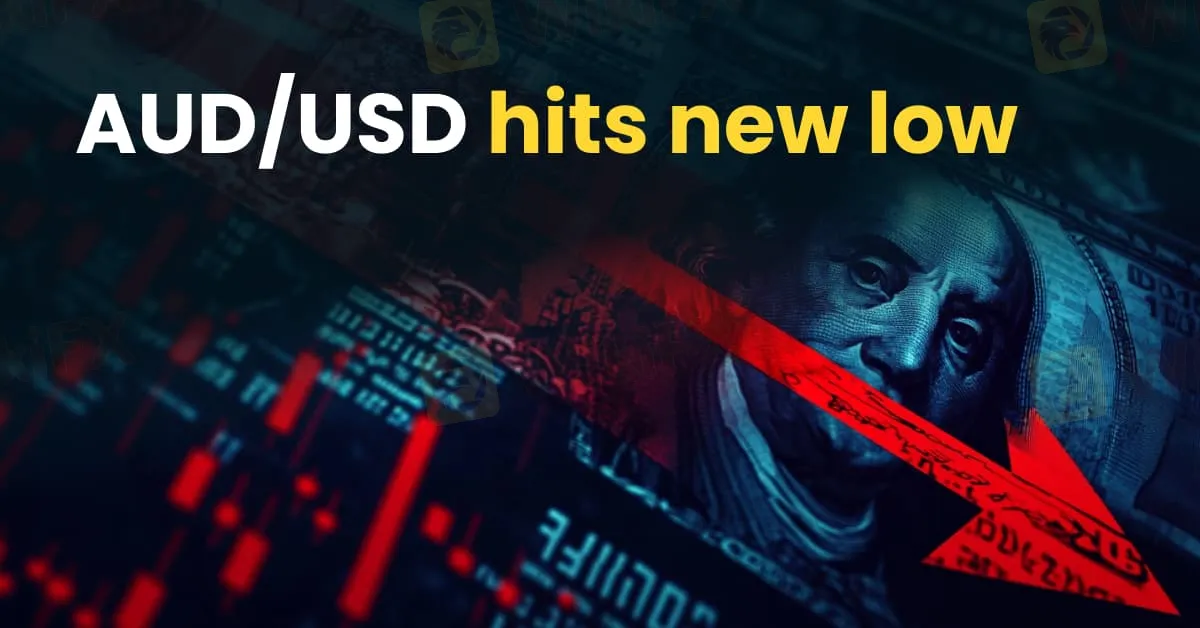AUD/USD Hits New Lows as Panic Selling Unfolds Amid Robust U.S. Jobs Report
Abstract:The Australian dollar tumbled to a fresh multi-year low of 0.5932 against the U.S. dollar, breaking through several key technical support levels and triggering widespread panic selling in the currency markets. The sharp decline comes at a time when mixed signals from economic data and monetary policy expectations are creating a volatile environment for traders and investors alike.

The Australian dollar tumbled to a fresh multi-year low of 0.5932 against the U.S. dollar, breaking through several key technical support levels and triggering widespread panic selling in the currency markets. The sharp decline comes at a time when mixed signals from economic data and monetary policy expectations are creating a volatile environment for traders and investors alike.
Technical Breakdown Sparks Market Sell-Off
The AUD/USD pairs plunge below 0.5932 marks the lowest level in recent years, as the Australian dollar succumbed to selling pressure on multiple fronts. Technical analysts noted that the pair breached several important support levels, prompting a cascade of stop-loss orders and panic selling. Market participants reacted swiftly, with many traders rushing to exit positions as risk aversion took hold. The breakdown has further exacerbated concerns that the underlying momentum could force the currency lower if investor sentiment fails to stabilize.
Strong U.S. Jobs Data Raises Mixed Signals
Adding to the complex economic landscape, the latest U.S. Labor Department data revealed that nonfarm payrolls surged by 228,000 in March—significantly outperforming Februarys revised gain of 117,000. This robust job creation suggests that the U.S. labor market remains strong despite ongoing global economic uncertainties. However, the report also showed that the unemployment rate ticked up slightly to 4.2% from 4.1%, surpassing market expectations and hinting at potential headwinds for the U.S. economy.
Fed Rate-Cut Expectations Remain Intact
Despite the encouraging employment numbers, market sentiment appears to be focused on the prospect of further monetary easing. Investors have already priced in a total of 100 basis points of Fed rate cuts over the course of the year, and some analysts do not rule out the possibility of an additional (fifth) rate cut. The expectation of lower borrowing costs is seen as a counterbalance to the strong jobs data, reinforcing the belief that accommodative monetary policy will prevail in the coming months.
Implications for Investors
For investors, the confluence of a sharply weakening Australian dollar and strong U.S. labor market data creates a paradox. On one hand, the robust U.S. jobs report supports the economic fundamentals of the dollar, while on the other, a deteriorating AUD/USD technical picture suggests that risk-off sentiment remains prevalent in global currency markets.
A weaker Australian dollar could benefit export-oriented Australian companies by making their goods more competitive overseas. Conversely, for Australian consumers and businesses that rely on imported products, the lower exchange rate could lead to higher costs and increased inflationary pressures. Moreover, if the Fed continues its course of rate cuts amid persistent economic uncertainty, further depreciation of risk-sensitive currencies like the Aussie might be on the horizon.
Looking Ahead
Analysts advise that traders and investors closely monitor upcoming economic indicators, including inflation readings and central bank commentary, to gauge the trajectory of both the U.S. economy and the AUD/USD pair. With technical weaknesses now clearly evident and monetary policy expectations still leaning toward further easing, market volatility is likely to persist in the near term.
In summary, while the U.S. labor markets resilience provides a positive backdrop for the dollar, the pronounced technical breakdown in the AUD/USD pair underscores the challenges facing the Australian currency. Investors are left balancing between the strong fundamentals of the U.S. economy and the caution warranted by a risk-off environment in global currency markets.

Read more

USD Index Continues to Weaken: Is the Market Losing Confidence?
Recently, the USD index has continued to weaken, with a noticeable shift in market sentiment. Investor optimism is fading as key policy decisions and trade negotiations loom, creating uncertainty about future trends.

Gold Price Rises Again, Breaking Through $3,300 Per Ounce
This article analyzes the reasons behind the rise in gold prices and explores the challenges the market may face in the future, as well as the potential risks and opportunities for investors.

SEC seeks to reopen case against Renwick Haddow to modify asset freeze
On April 24, 2025, the U.S. Securities and Exchange Commission (SEC) filed a motion in the Southern District of New York seeking to reopen its enforcement action against Renwick Haddow. The goal is to adjust the scope of a nearly eight-year-old asset freeze so that certain foreign real-estate assets may be sold by bankruptcy trustees in the U.K.

What is smartytrade?
SmartyTrade is an emerging online trading platform that gives investors access to a wide range of global markets. Since its launch, the broker has positioned itself as a one-stop shop for trading CFDs, forex pairs, cryptocurrencies, commodities, and even binary options—all through intuitive web and mobile interfaces.
WikiFX Broker
Latest News
MultiBank, MAG, and Mavryk Partner for $3B RWA Tokenization
Westpac Fined NZ$3.25 Million Over Misleading Fee Practices Affecting 24,000+ Customers
StoneX Brings FOREX.com to Singapore
Italy’s Consob Blocks Four Crypto Platforms for Unauthorized Services
ATFX Reaffirms Commitment to Traders and Community Growth
Regulators Uncover $1.2 Billion Fraud Linked to IM Academy
Key Things People Want to Learn Before Investing in Forex Trading
Beware of Rising Online Scams in the Philippines: A Growing Threat
USD Index Continues to Weaken: Is the Market Losing Confidence?
Gold Price Rises Again, Breaking Through $3,300 Per Ounce
Rate Calc
